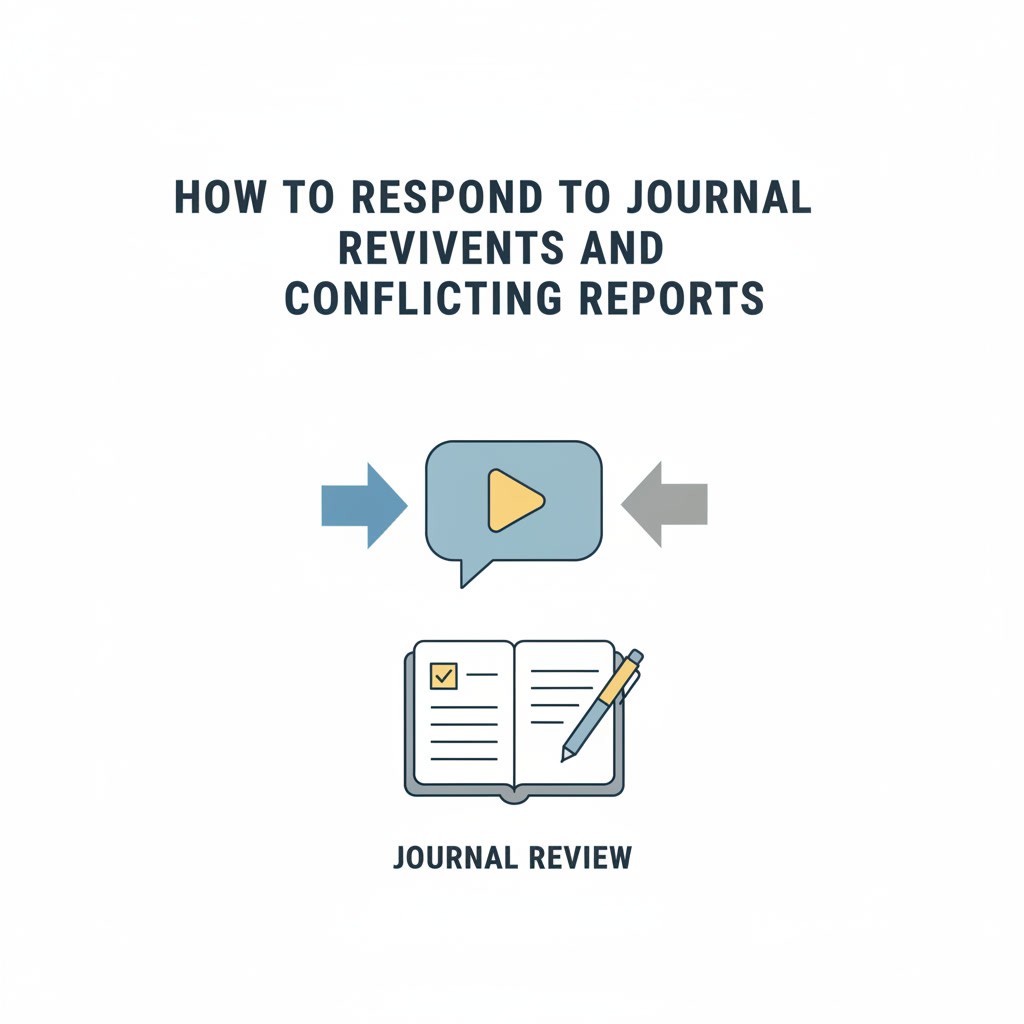How to Structure a Scientific Research Paper: IMRaD Format Guide
If you want your research to stand out and be understood, mastering the structure of a scientific research paper is essential. Most journals and disciplines rely on the IMRaD scientific article format—Introduction, Methods, Results, and Discussion—which provides a consistent, logical way to present your work. This guide will show you what belongs in each section, how to approach them, and why structure matters whether you’re writing, publishing, or evaluating academic work.
Understanding how to structure a scientific paper doesn’t just help you as a writer—it also empowers you as a reader, making it easier to analyze, interpret, and cite research articles effectively. For practical tips on evaluating the quality of published studies, explore our resource on how to evaluate academic papers.
If you're writing or analyzing scientific research papers, understanding the parts of a research paper and the overall structure of a scientific research paper is one of the most important skills you can develop. This guide breaks down the widely used —Introduction, Methods, Results, and Discussion—and explains what each section is for, how to approach writing it, and why it matters for effective scientific communication.
Why is the Structure of a Scientific Research Paper Important?
Understanding the structure of a scientific research paper is crucial because this standardized format, such as the IMRaD structure, fosters clarity, organization, and ease of understanding. By standardizing how research is communicated, structured papers help readers quickly locate essential information, improving accessibility and reducing ambiguity.
For writers, this structure improves clarity, supports logical organization, and aligns your work with the scientific method. It also streamlines the peer review process and increases your chances of publication by meeting editorial expectations. Structured scientific writing promotes transparency, trust, and effective communication—especially in fast-moving academic fields
What is the IMRaD Format?
The IMRaD format is a foundational part of the structure of a scientific research paper. IMRaD stands for Introduction, Methods, Results, and Discussion, and is a standardized structure widely adopted in scientific writing. This format clearly outlines each stage of the research process, making it easier for readers to follow the logical flow of a study.
Introduction- explains the research question and its significance
Methods- details how the research was conducted
Results- present the findings
Discussion- interprets what these findings mean in the broader context of existing knowledge
This clear delineation makes IMRaD structure a preferred choice in scientific communication due to its readability, logical organization, and ease of evaluation by peers and reviewers.

Key Sections of a Scientific Paper Explained
If you want to master how to structure a scientific paper, it’s important to understand the distinct parts of a research paper. Each section of the IMRaD scientific article format serves a specific purpose and contributes to the clarity and impact of your research. Below is a section-by-section breakdown of these core components, highlighting the purpose of each section in research paper writing.
Title and Abstract
The Title and Abstract are the first sections of the structure of a scientific research paper, designed to quickly inform readers of your study’s main topic and findings. An effective title helps readers quickly determine the relevance of the paper to their interests.
The Abstract is a brief summary of the entire research paper, typically ranging from 150–300 words. It succinctly outlines the paper's purpose, methods, key results, and major conclusions.
Since many readers, reviewers, and indexing databases rely heavily on abstracts to decide whether a paper is relevant or worth reading, it is crucial that the abstract clearly answers: what was done, how it was done, and what was found.
Additionally, including relevant keywords in the abstract is important for indexing purposes, helping the paper become discoverable in academic databases and search engines.
Introduction Section in IMRaD Format
As you learn how to structure a scientific paper, you’ll see that the Introduction section is essential for providing background and stating your research question—regardless of the scientific article format you use. As the first major section in the IMRaD format, it provides the necessary context for your study and explains why the research was worth doing in the first place.
You’ll typically start with background information—what is already known about the topic—then narrow your focus to identify a specific research gap or problem your study addresses. This section should guide the reader from broad context to a clear, specific research question or hypothesis. A well-written Introduction follows what’s often called the “funnel structure,” moving from general to specific in a logical flow.
In many scientific papers, the review of prior work is integrated directly into the Introduction. But depending on your discipline, you might be expected to write a separate literature review section. If you’re unsure how to synthesize background research effectively, our Step-by-Step Literature Review Guide will walk you through it.
Ultimately, the Introduction prepares your reader to interpret your findings by placing them in a clear academic context. It’s not just about setting the scene—it’s about making the case for why your study matters.
Methods Section in a Scientific Research Paper
The Methods section of the IMRaD format—sometimes labeled “Materials and Methods”— details exactly how your research was conducted. The Methods section is a vital part of the structure of a scientific research paper, ensuring transparency and reproducibility of your work.
As a key component of the IMRaD format, this section answers a critical question: What did you do to get your results? In this part of a research paper, you’re expected to describe exactly how the study was conducted. This includes your research design, tools or materials used, procedures followed, and the techniques applied to analyze your data. The level of detail should be sufficient for another researcher to replicate your study under similar conditions.
Although this section may feel more technical or dry to write, it plays a crucial role in establishing the credibility of your findings. Without a clearly written and methodologically sound Methods section, the rest of the structure of a scientific research paper loses integrity.
For consistency, the Methods section is typically written in the past tense and follows a formal, objective tone. If your goal is to make your results believable and your work publishable, this is one of the parts of a research paper that deserves special care and clarity.
Results Section in IMRaD Scientific Article Format
In the structure of a scientific research paper, the Results section presents the findings of your study objectively and without interpretation. As one of the core scientific paper sections within the IMRaD format, its function is to answer a single question: What did you find out?
This section typically combines concise textual summaries with tables, figures, and visualizations that highlight key data. Results should be reported in a logical order, often mirroring the sequence of the Methods section or arranged by the significance of the findings.
Only data and observations belong here—avoid analysis, explanation, or speculation. The purpose of this section in a research paper is to deliver factual outcomes, not to interpret them. Interpretation is reserved for the Discussion section that follows.
While some journals allow the Results and Discussion to be combined, this guide assumes a separate structure for clarity. For consistency, refer back to the Methods section’s structure to ensure your results align clearly with each procedure or analysis described earlier.
Discussion Section: Interpreting Your Scientific Research Paper
Within the scientific research paper structure, the Discussion section interprets your findings and situates them within the broader context of existing research. The Discussion section is one of the most analytical and insight-driven parts of a research paper, where you address the question: What do the results mean, and why do they matter?
This section typically begins by linking your findings back to the original hypothesis or research question. You should then assess whether your results support or contradict prior studies, citing relevant literature. A strong Discussion also accounts for unexpected results, addresses study limitations, and outlines implications for theory, practice, or further research.
The purpose of this section in a research paper is to make your argument—showing how the data contributes to knowledge in the field. As part of the standard structure of a scientific research paper, the Discussion demonstrates the significance and relevance of your work beyond the raw findings presented earlier.
Conclusion Section in the Structure of a Scientific Research Paper
The Conclusion is the final section of the structure of a scientific research paper. Here, you have the opportunity to briefly reinforce the main findings of your study and highlight their broader significance. While some journals require a dedicated conclusion, others expect you to fold it into the final paragraph of the Discussion. Either approach is common in papers that follow the IMRaD format.
If your journal does request a separate section, keep it concise. Focus on restating the most important results and what they mean in a wider context. You can also include practical recommendations or note any open questions your research raises.
Even if it’s not always labeled as its own heading, the conclusion remains an important part of a research paper’s structure. It leaves your readers with a clear sense of what your study contributes—and why it matters.
Expert Tip: Want to quickly check that your conclusion is clear and compelling? thesify’s PaperDigest feature can instantly extract and display the main conclusion of your paper, so you can be sure your key message stands out.
Here’s an example of thesify’s PaperDigest summarizing a manuscript’s conclusion in one clear sentence:

References Section and Final Parts of a Scientific Research Paper
The References section is a required element in the structure of a scientific research paper and is where you credit the sources that informed your research. Whether it’s titled References, Works Cited, or Literature Cited, this section is a standard part of the structure of a scientific research paper. Its primary purpose is to give proper attribution and allow readers to locate the original studies or theories you’ve cited.
Including accurate citations both builds credibility and situates your work within the existing body of scientific knowledge. If you're unsure how to format your sources, refer to thesify’s free citation guides to learn how to cite in APA, MLA, Chicago, and other widely used styles.
Expert tip: If you’re interested in using a reliable AI citation generator, check out our list of the 10 Best Free Citation Tools for Academic Referencing. Discover the top free citation generators for academics to ensure accurate and reliable referencing in your research papers.
Beyond the References section, many papers also include Acknowledgments—to recognize collaborators, advisors, or funding sources—and Appendices for supplementary materials like detailed tables, raw data, or extended methods. These components aren’t part of the core IMRaD format, but they play an important supporting role in making your paper complete and transparent.
Together, these final sections round out your manuscript and demonstrate your attention to academic standards and research integrity.
How the Scientific Article Format Varies Across Disciplines
While the structure of a scientific research paper often follows the IMRaD format in the natural and life sciences, you’ll find important variations in scientific article formats across disciplines. Understanding the structure of a scientific research paper means recognizing that different disciplines adapt or modify this framework based on the nature of their research questions and methods.
In the social sciences, for example, articles often include a standalone Literature Review or Theory section before the methods. In the humanities, the structure may be more narrative or thematic, organized around argument development rather than standardized headings. Review articles across disciplines often abandon the IMRaD structure entirely, opting instead for sections arranged by topic or theme.
Even within STEM fields, you’ll find variation. Some papers use alternative headings like “Materials and Methods” or “Methodology” depending on the discipline or journal style. It’s also common in certain fields—such as computer science or engineering—to combine the Results and Discussion sections, especially when the findings require immediate interpretation.
These differences highlight a flexible truth: once you understand the purpose of each section in a research paper, you can adapt the structure to fit your field. Most scientific articles still follow a version of IMRaD—just with field-specific adjustments. Always consult your target journal’s submission guidelines, but don’t be surprised if the format varies.
Why Use the IMRaD Scientific Article Format?
The IMRaD format is more than just a writing convention—it’s a proven framework that makes your research easier to communicate and evaluate. By dividing your work into distinct, focused sections, you clarify your arguments, make your methodology and findings more accessible, and ensure each part of your research receives the attention it deserves.
For readers and reviewers, this scientific article format offers clear navigation: they can quickly locate your methodology, review your findings, and assess your interpretation. IMRaD also aligns your paper with scholarly expectations, making the peer review process smoother and increasing your chances of publication. Its widespread use is a testament to how it improves the quality, efficiency, and trustworthiness of scientific communication.
FAQs About Scientific Paper Structure
Below are answers to common questions regarding research paper structure and the purpose of each section in a typical scientific article.
What are the main sections of the structure of a scientific research paper?
The main sections included in the standard structure of a scientific research paper are:
Title and Abstract
Introduction
Methods (or Materials and Methods)
Results
Discussion
(Optional) Conclusion
References, and often Acknowledgments or Appendices
Each section serves a specific purpose: from setting the context and research question (Introduction), to presenting findings (Results), to interpreting their meaning (Discussion). Understanding these scientific paper sections helps you both write and evaluate academic work more effectively.
What is the purpose of the Results section in a research paper?
The Results section presents the data and key findings of your study—clearly, logically, and without interpretation. It answers the question, “What did the study find?” using descriptive text, tables, and figures. The Results section should be organized to follow either the sequence of the Methods or the order of most significant findings. Interpretation belongs in the Discussion section, not here.
Why is the IMRaD format used in scientific writing?
The IMRaD format—Introduction, Methods, Results, and Discussion—is used because it mirrors the scientific method and standardizes how research is communicated. Readers benefit from its clear structure, which allows them to quickly locate the information they need. Writers benefit from having a logical framework to present their work. Overall, the IMRaD structure enhances clarity, readability, and transparency in scientific article writing.
What do I include in the Discussion vs the Conclusion?
The Discussion is where you interpret and analyze your findings. It connects your results to your research question, discusses implications, compares with prior studies, and notes limitations. The Conclusion (if present) offers a concise summary of the key insights, often highlighting the broader significance or future directions.
In many IMRaD papers, the final paragraph of the Discussion functions as the Conclusion. If your paper has both, use the Discussion for depth—for example, by addressing counterarguments to your claims (see our guide to writing effective counterarguments in research papers)—and use the Conclusion for takeaway messages.
How do you structure a scientific paper for journal submission?
To structure a scientific paper for journal publication, use the standard scientific article format: begin with a clear title and abstract, then organize the manuscript into the IMRaD sections—Introduction, Methods, Results, and Discussion—followed by references and any supplementary material.
Quickly Check Your Scientific Paper Structure with PaperDigest
If you ever need a quick, structured summary of your research paper, thesify’s PaperDigest feature can help. Simply upload your draft to thesify and instantly see an organized breakdown of your abstract, main claims, methods, and conclusion—all mapped to the standard scientific article format. This is a great way to check if your manuscript follows the IMRaD structure and covers every essential section before you submit or share your work.

Using PaperDigest not only saves time, but it also helps you visualize your paper’s strengths and identify areas for improvement—making your scientific writing process more efficient and effective.
Conclusion – Applying the Structure
By adopting the IMRaD format and understanding the purpose of each section, you’ll make your research more accessible, compelling, and credible. Organizing your manuscript in this way not only ensures you cover every critical aspect of your study, but it also helps readers grasp your key contributions with ease.
No matter your discipline, using a structured approach helps you plan, draft, and revise more efficiently—and results in a scientific paper that stands up to peer review and makes a meaningful impact.
Ready to improve your scientific writing with thesify?
Get instant, section-by-section feedback with thesify’s academic writing tools. Or use thesify’s PaperDigest feature for a clear summary of your paper’s structure and key findings. Try thesify today.

Related Posts
How to Evaluate Academic Papers: Decide What to Read, Cite, or Publish: Determining whether an academic paper is worth reading, citing, sharing, or publishing is rarely straightforward. It requires careful evaluation — and until recently, it demanded significant time, experience, and effort. Find out how with clear strategies and the right tools, this process becomes far more manageable.
How Researchers Are Using AI to Gain New Perspectives on Academic Writing: By conducting a comprehensive analysis of your draft, thesify’s SOTA feature empowers researchers to see how their work aligns with current academic discussions, uncovers gaps in their research, and identifies opportunities to strengthen their contributions. Learn how thesify’s SOTA feature can contribute to your research process.
Going Beyond Journal Recommendations: How AI Supports Conference Submission & Academic Publishing: Academic publishing opportunities finder platforms replace hours of manual journal hunting with clear, data‑rich suggestions. Powered by advanced AI for academic publishing, check out how these tools scan your abstract or draft, look at recent issues, and highlight venues that welcome work like yours.

















